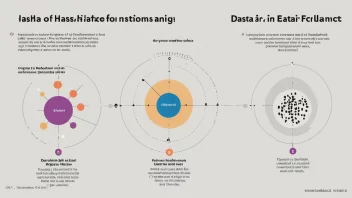Cryptographic hashing algorithms are fundamental to modern technology, playing a crucial role in securing data, ensuring integrity, and facilitating blockchain operations. These algorithms create a fixed-size string of characters from input data of any size, serving as a digital fingerprint. As the digital world continues to evolve, understanding how these algorithms work and their applications is essential for anyone involved in technology, cybersecurity, or data management.
What is a Cryptographic Hashing Algorithm?
A cryptographic hashing algorithm transforms input data into a unique fixed-size output, known as a hash. This process is deterministic, meaning the same input will always produce the same hash. However, even a minor change in the input results in a significantly different hash, highlighting the sensitivity and uniqueness of these algorithms. Common examples include SHA-256 and MD5.
Applications in Blockchain Technology
Cryptographic hashes are integral to the functioning of blockchain technology. Each block in a blockchain contains a hash of the previous block, linking them securely. This chaining ensures that any alteration in one block affects all subsequent blocks, making tampering evident. Additionally, hashes are used to validate transactions, ensuring that they have not been altered during transmission.
Ensuring Data Integrity
One of the primary purposes of cryptographic hashing is to ensure data integrity. When data is transmitted or stored, a hash can be generated and compared later to verify that the data remains unchanged. This is particularly important in fields like finance and healthcare, where data integrity is paramount. Hashes can also be used in digital signatures, enhancing the security of documents and communications.
Password Storage and Security
Storing passwords securely is a critical aspect of cybersecurity. Instead of saving passwords in plaintext, systems use cryptographic hashing to convert passwords into hashes. When a user logs in, the system hashes the entered password and compares it with the stored hash. This method protects against data breaches, as even if the database is compromised, attackers cannot easily retrieve the original passwords.
Challenges and Considerations
While cryptographic hashing algorithms offer significant benefits, they are not without challenges. Some algorithms, like MD5 and SHA-1, have vulnerabilities that can be exploited, leading to collisions where different inputs produce the same hash. As such, it is crucial to use strong, modern algorithms, such as SHA-256 or SHA-3, and to stay updated on best practices in cryptography.
In conclusion, cryptographic hashing algorithms are vital for securing data, ensuring integrity, and facilitating blockchain operations. Their applications span various fields, underscoring their importance in today's digital landscape. By understanding these algorithms, individuals and organizations can better protect their data and contribute to a more secure digital environment.






